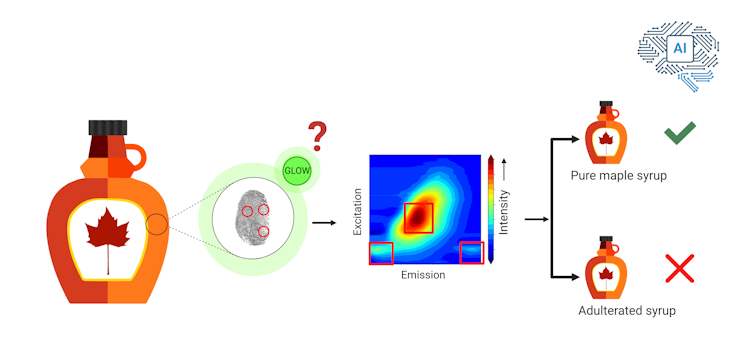Food fraud, oreconomically motivated adulteration, is thedeliberate misrepresentationof food for economic gain.
This can include the substitution, dilution, addition and/or the removal of ingredients.
Canadaproduces more than 70% of the worlds maple syrupand Quebec is the capital of this production.

U.S. tariffs could lead to fake syrup flooding the market.© Sveta Y, Shutterstock
These circumstances often increase food prices, creating an incentive for fraudsters to exploit the system.
Unsurprisingly,food fraud cases have increased tenfold, according to recent estimations.
The more complex the testing methods, the more difficult they are to circumvent.

Analyzing the distinctive features in maple syrup fluorescence fingerprints (glow), using AI, to differentiate pure from adulterated maple syrup.
One degree Brix is equivalent to 1% sugar.
However, applications may belimited if unknown or non-conventional adulterantsare used.
Fluorescence fingerprinting works by examining howinternal molecules in maple syrup glow when exposed to UV and visible light.

However, expanding the fluorescence fingerprint reference library can improve the accuracy and reliability of results.
AI models often require very large and extensive databases.
This article is republished fromThe Conversationunder a Creative Commons license.

News from the future, delivered to your present.
Two banks say Amazon has paused negotiations on some international data centers.




















